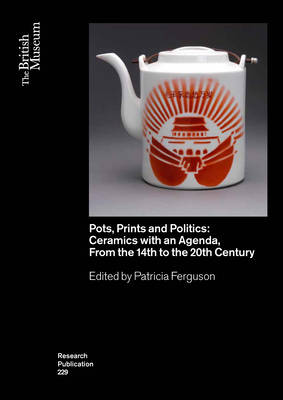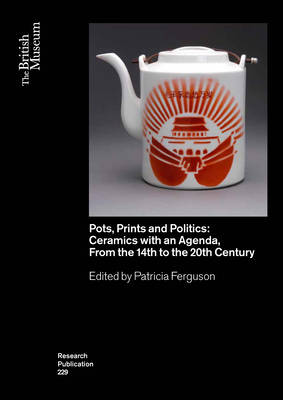
- Afhalen na 1 uur in een winkel met voorraad
- Gratis thuislevering in België vanaf € 30
- Ruim aanbod met 7 miljoen producten
- Afhalen na 1 uur in een winkel met voorraad
- Gratis thuislevering in België vanaf € 30
- Ruim aanbod met 7 miljoen producten
Zoeken
Pots, Prints and Politics
Ceramics with an Agenda, from the 14th to the 20th Century
€ 66,95
+ 133 punten
Omschrijving
From the introduction of woodblock printing in China to the development of copper-plate engraving in Europe, the print medium has been used around the world to circulate knowledge. Ceramic artists across time and cultures have adapted these graphic sources as painted or transfer-printed images applied onto glazed or unglazed surfaces to express political and social issues including propaganda, self-promotion, piety, gender, national and regional identities. Long before photography, printers also included pots in engravings or other two-dimensional techniques which have broadened scholarship and encouraged debate.
Pots, Prints and Politics examines how European and Asian ceramics traditionally associated with the domestic sphere have been used by potters to challenge convention and tackle serious issues from the 14th to the 20th century. Using the British Museum's world-renowned ceramics and prints collections as a base, the authors have challenged and interrogated a variety of ceramic objects - from teapots to chamber pots - to discover new meanings that are as relevant today as they were when they were first conceived.
Pots, Prints and Politics examines how European and Asian ceramics traditionally associated with the domestic sphere have been used by potters to challenge convention and tackle serious issues from the 14th to the 20th century. Using the British Museum's world-renowned ceramics and prints collections as a base, the authors have challenged and interrogated a variety of ceramic objects - from teapots to chamber pots - to discover new meanings that are as relevant today as they were when they were first conceived.
Specificaties
Betrokkenen
- Uitgeverij:
Inhoud
- Aantal bladzijden:
- 196
- Taal:
- Engels
- Reeks:
Eigenschappen
- Productcode (EAN):
- 9780861592296
- Verschijningsdatum:
- 26/05/2021
- Uitvoering:
- Paperback
- Formaat:
- Trade paperback (VS)
- Afmetingen:
- 208 mm x 295 mm
- Gewicht:
- 703 g

Alleen bij Standaard Boekhandel
+ 133 punten op je klantenkaart van Standaard Boekhandel
Beoordelingen
We publiceren alleen reviews die voldoen aan de voorwaarden voor reviews. Bekijk onze voorwaarden voor reviews.










